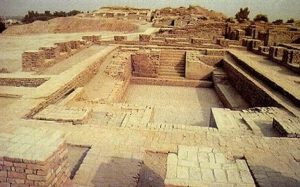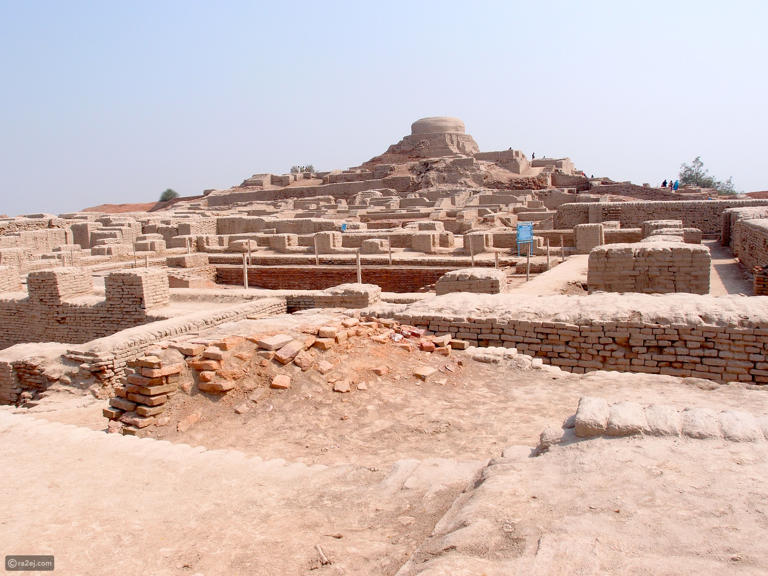FALCON POWERS – The civilization of the Indus Valley, including the mysterious disappearance of its cities and inhabitants, remains a puzzle that has intrigued researchers around the world.
Some believe that the changing course of the Indus River disrupted the local agricultural economy and the importance of the city as a trade center, leading to the collapse of the civilization.
However, there is no clear evidence that the river’s course change destroyed the civilization and left the associated cities completely abandoned, as researchers suggest. The exact events that transpired remain unknown.

In this report, we explore the story of one of the most enigmatic and peculiar cities of the Indus Valley civilization, Mohenjo-daro. Its inhabitants vanished suddenly, and the city collapsed rapidly in an inexplicable manner, especially considering the absence of clear evidence of a catastrophic event.
Mohenjo-daro is located in the Sindh province of Pakistan, approximately 390 kilometers northeast of Karachi.
Mohenjo-daro was established around 2600 BCE and was one of the largest settlements in the Indus Valley civilization, which flourished between 2600 and 1900 BCE.
At its peak, the city was home to approximately 40,000 people, making it one of the most densely populated cities in the ancient world.
Mohenjo-daro was characterized by its advanced urban planning, divided into residential, commercial, and governmental quarters. The houses were constructed with fired bricks and equipped with an advanced sewage system. Public baths and other structures were also found in the city.
Moreover, Mohenjo-daro had a rich and diverse culture. Numerous artifacts have been unearthed in the city, including statues, seals, tools, and jewelry.

These artifacts indicate that the people of Mohenjo-daro engaged in trade with other civilizations and possessed high artistic skills.
The sudden disappearance
The reasons for the collapse of the Indus Valley civilization, including Mohenjo-daro, remain unknown. Some scholars believe that climate change or drought led to the collapse of the civilization, while others speculate invasion or social upheaval as potential causes.
The city collapsed suddenly, and its inhabitants vanished abruptly, leaving it abandoned for reasons that are entirely incomprehensible. It is said that the city was likely the victim of a swiftly occurring catastrophe rather than a gradual and natural decline. However, there is no sign of floods, fires, or any catastrophic event. Only dozens of skeletal remains have been discovered at the site, and none of them appear to be victims of a massacre or a disastrous incident.
The only certainty is that by around 1800 BCE, most major cities in the region were almost entirely deserted.
One theory that is strongly suggested is that severe drought struck the area, leading to the collapse of agriculture and the abandonment of large settlements. A study conducted in 2023 provided some compelling evidence for this theory.

Researchers at the University of Cambridge examined growth layers in the geological feature to determine historical rainfall patterns in the region.
They revealed that the area had experienced extremely arid conditions for approximately 4,200 years ago, which lasted for several centuries.


